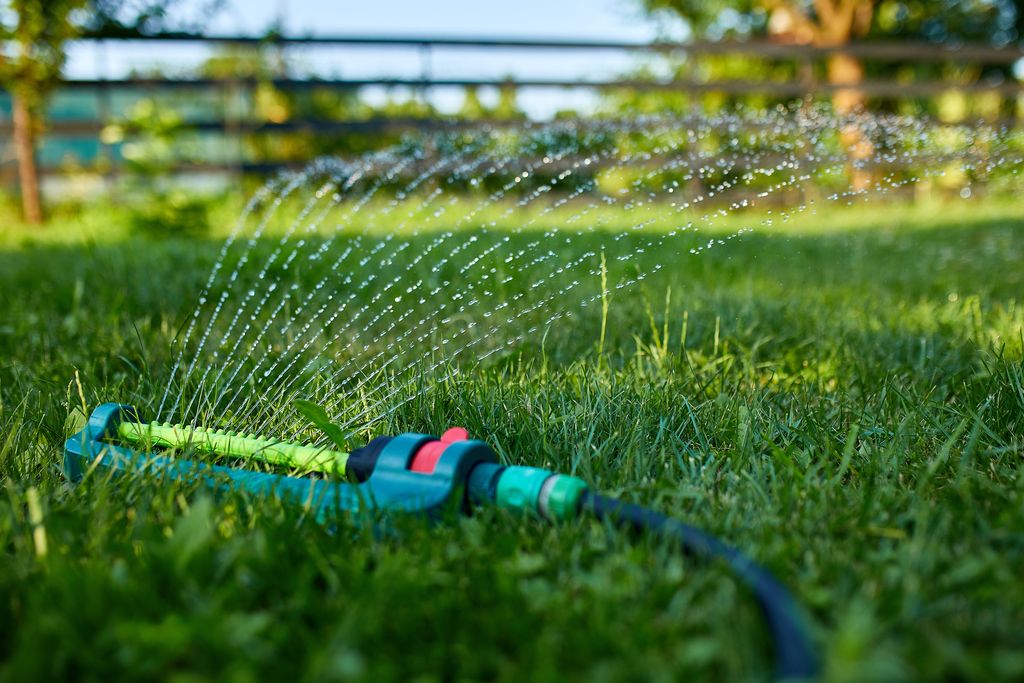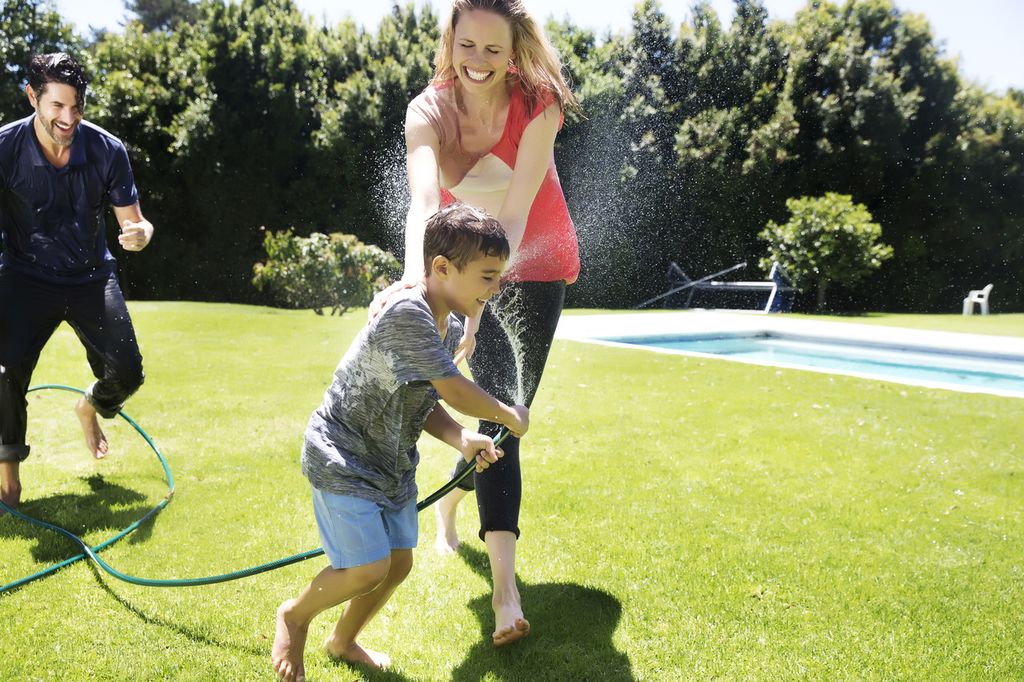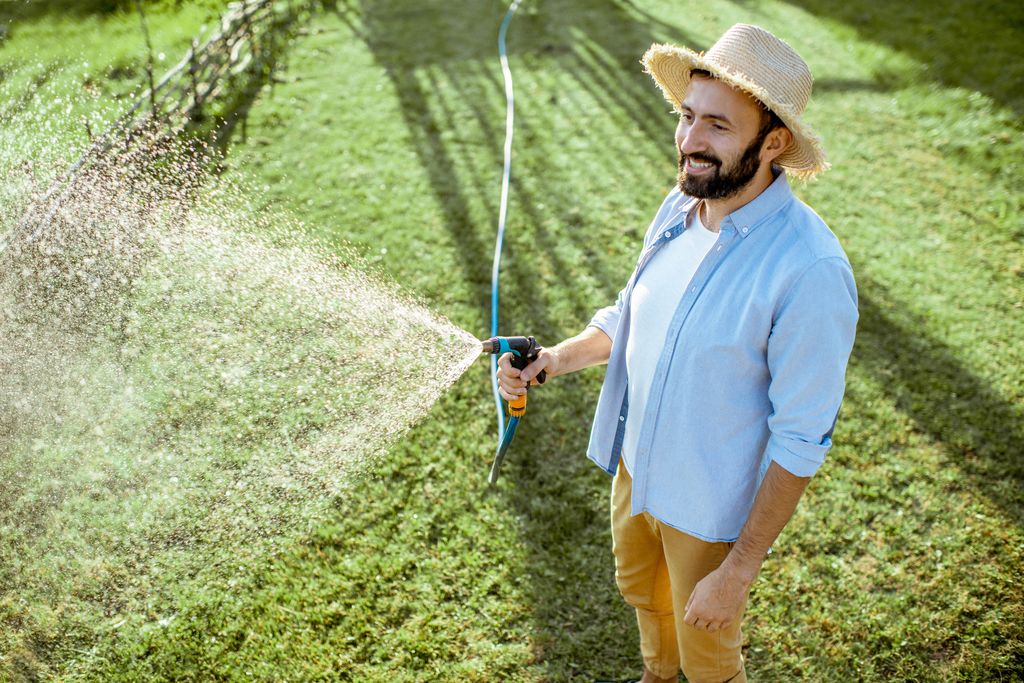As a homeowner, you’ve probably asked yourself, when should I stop watering my lawn?
Understanding the right time to adjust your lawn care routine is crucial for maintaining a healthy and vibrant yard. Overwatering can lead to root rot and disease, while underwatering can stress your grass and lead to brown patches.
In this article, we’ll explore expert advice on when to stop watering your lawn, so you can keep your grass greener and your home looking fabulous.
This post contains affiliate links. As an Amazon Associate, I earn from qualifying purchases at no additional cost to you.
Understanding Your Lawn’s Water Needs
Before diving into the specifics, let’s discuss how much water your lawn actually needs. Grass requires different amounts of water at various times of the year, influenced by factors like climate, grass type, and soil conditions.
Here’s a brief overview:
| Season | Watering Frequency | Recommended Time |
|---|---|---|
| Spring | Once a week | Early morning (5 AM – 10 AM) |
| Summer | Every 3-5 days | Early morning or late evening |
| Fall | Once every 1-2 weeks | Early morning |
| Winter | As needed (if soil is dry) | Midday (if temperatures are above freezing) |
When to Stop Watering
Now that you know the general watering frequency, let’s find out when to stop watering your lawn, particularly in the fall:
Here are some expert recommendations::
- Continue Until Ground Freezes: For lawns in colder climates, such as Minnesota, it’s advised to keep watering until the ground freezes. This helps the grass recover from summer stress and prepares it for winter.
- Monitor Weather Conditions: If temperatures drop consistently below freezing (around 30°F), you should cease watering, as water will not penetrate frozen ground.
- Assess Rainfall: If your area receives more than an inch of rain per week, you can skip additional watering. Conversely, during dry spells, you may need to water a few times a week.
Signs of Overwatering? Stop Watering!
To determine if you should reduce watering your lawn, look for the following signs that indicate overwatering:
- Discolored Grass: If your grass appears yellow, brown, or pale instead of a vibrant green, it may be receiving too much water, which can leach nutrients from the soil.
- Mushy Soil: Walking on your lawn should not feel soggy. If the soil is mushy or water seeps up around your shoes, it indicates excessive moisture.
- Weed Growth: An increase in weeds, such as crabgrass, is a sign that your lawn is too wet. Weeds thrive in overly moist conditions, taking advantage of the weakened grass.
- Fungal Growth: The presence of mushrooms or other fungi is a clear indication that the soil is too wet. Fungi flourish in moist environments, which can lead to lawn diseases.
- Runoff: If water runs off the lawn rather than being absorbed, it suggests that the soil is saturated. This can prevent proper hydration of the grass roots.
- Thin Grass: Overwatered grass may become thin and sparse, as shallow roots struggle to absorb nutrients and water effectively.
- Bare Patches: Look for spots where grass is thinning or has died off. This can result from roots being deprived of air and nutrients due to excessive moisture.
- Footprints: If footprints remain visible for an extended time after walking on the grass, it indicates that the lawn is likely overwatered and not recovering properly
Optimal Watering Practices
When addressing the question when should I stop watering my lawn, it’s essential to adopt optimal watering practices.
Here are some tips:
Water Deeply, Not Frequently
Watering deeply encourages roots to grow deeper into the soil, making your lawn more drought-resistant. Aim for about 1 to 1.5 inches of water per week, including rainfall.
Time of Day Matters
The best time to water your lawn is early in the morning. This practice minimizes evaporation and allows grass blades to dry before evening, reducing the risk of disease.
Use a Rain Gauge
Consider using a rain gauge to measure how much water your lawn is receiving. This simple tool can help you track rainfall and adjust your watering schedule accordingly.
Seasonal Adjustments
As the seasons change, so should your lawn care routine.
Spring
During spring, your lawn will emerge from dormancy. Start watering again as temperatures rise, but be cautious not to overdo it. Monitor soil moisture closely during this transitional period.
Summer
Summer heat demands more water, but not necessarily more frequent watering. Adjust your schedule to water less often but more deeply. In extreme heat, you may need to water every 3-5 days.
Fall
As temperatures drop and rainfall increases, you can reduce watering frequency. Keep an eye on the weather—if it’s raining consistently, you may not need to water at all.
Importance of Fall Watering
- Fall Recovery: Lawns experience a second growth phase in the fall, which is essential for rebuilding root systems and ensuring robust health for the following spring. Proper watering during this period supports nutrient absorption and minimizes winter stress.
- Avoid Overwatering: It’s important to avoid overwatering, which can lead to shallow root systems and increased susceptibility to diseases. Aim for about 1 to 2 inches of water per week, distributed over 2-3 watering sessions.
Winter
In winter, most grass types enter dormancy. Water only as needed, particularly in dry periods. If the soil is dry more than an inch deep and temperatures are above freezing, a light watering can help.
Environmental Considerations
Remember, local climate and environmental factors play a significant role in determining your lawn’s watering needs. Here are a few considerations:
- Soil Type: Sandy soils drain faster and may require more frequent watering than clay soils, which retain moisture.
- Grass Type: Different grass varieties have distinct water needs. Kentucky bluegrass, for instance, needs more water than fescue.
- Local Regulations: Some areas have watering restrictions. Always check local guidelines to avoid fines.
Conclusion
So, when should you stop watering your lawn?
The best answer is: it depends! By paying attention to the signs of your lawn, adhering to seasonal adjustments, and considering environmental factors, you’ll keep your grass healthy and vibrant.
Remember that deep, infrequent watering is key. If you notice signs of stress, reduce your watering schedule and adapt to the conditions around you.
Don’t let your lawn suffer from over or under-watering—take action today to ensure it’s thriving! With these expert tips, you’re now equipped to make informed decisions about your lawn care routine.
Happy gardening!



